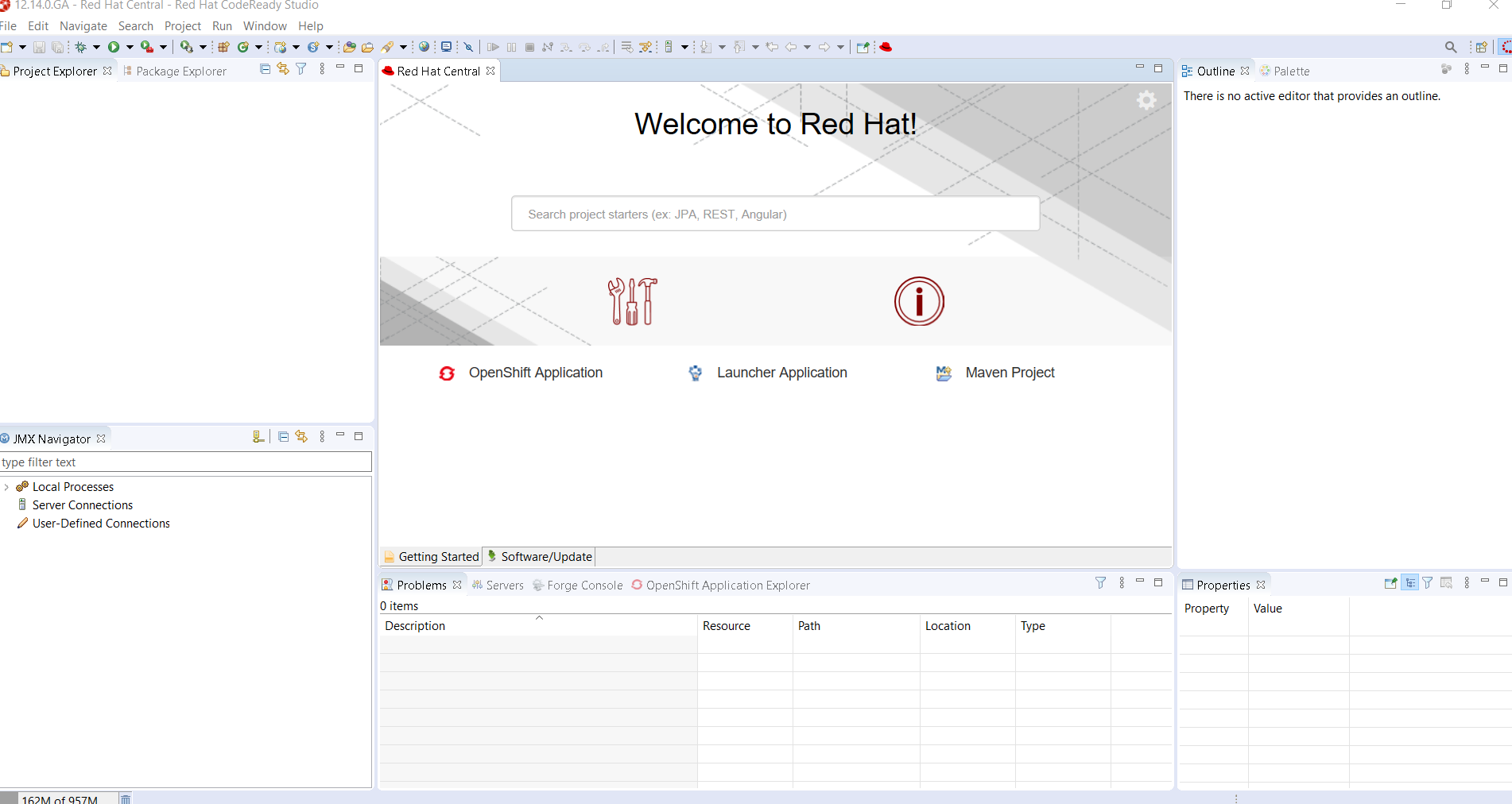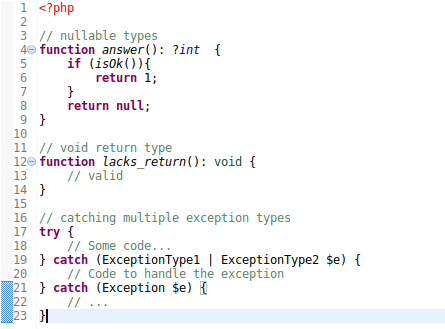Create n ew project using the Wizard: Ctrl + Alt + N: Create n ew project, file, class, etc. Alt + F, then. Open project, file, etc. Ctrl + Shift + R: Open R esource (file, folder or project) Alt + Enter: Show and access file properties: Ctrl + S: S ave current file: Ctrl + Shift + S: S ave all files: Ctrl + W: Close current file: Ctrl + Shift + W: Close all files: F5.
IntelliJ IDEA provides multiple ways to generate common code constructs and recurring elements, which helps you increase productivity. These can be either predefined or custom templates that are applied differently based on the context, various wrappers, and automatic pairing of characters.
Additionally, IntelliJ IDEA provides code completion and Emmet support.
From the main menu, select Code | Generate
Alt+Insert
to open the popup menu with available constructs that you can generate.
Generate constructors
IntelliJ IDEA can generate a constructor that initializes specific class fields using values of corresponding arguments.
Generate a constructor for a class
-
On the Code menu, click Generate
Alt+Insert.
-
In the Generate popup, click Constructor.
-
If the class contains fields, select the fields to be initialized by the constructor and click OK.
The following code fragment shows the result of generating a constructor for a class:
Shortcut Key To Generate Return Type Eclipse In The Philippines
Generate delegation methods
IntelliJ IDEA can generate methods that delegate behavior to the fields or methods of your class. This approach makes it possible to give access to the data of a field or method without directly exposing this field or method.
Generate a delegation method for a class
-
On the Code menu, click Generate
Alt+Insert.
-
In the Generate popup, click Delegate Methods.
-
Select the target field or method, and click OK.
-
Select the desired methods to be delegated and click OK.
The following code fragment shows the result of delegating the get(i) method of the Calendar class inside another class:
Generate equals() and hashCode() methods
The Java super class java.lang.Object provides two methods for comparing objects:
-
public boolean equals(Object obj)returnstrueif the object passed to it as the argument is equal to the object on which this method is invoked. By default, this means that two objects are stored in the same memory address. -
public int hashCode()returns the hash code value of the object on which this method is invoked. The hash code must not change during one execution of the application but may change between executions.
It is generally necessary to override the hashCode() method if you override equals() because the contract for hashCode() is that it must produce the same result for objects that are equal. For more information, see the API specification for the Object class.
Generate equals() and hashCode() for a class
-
From the Code menu, click Generate
Alt+Insert.
-
In the Generate popup, click equals() and hashCode().
-
Select a velocity template from the Template list.
You can also click to open the Templates dialog, where you can select an existing template or create a custom template.
-
Select checkboxes if you want to accept subclasses and use getters during code generation.
-
Click Next.
-
Select the fields that should be used to determine equality, and click Next.
-
Select the fields to use for calculating the hash code value. You can choose only from fields that were selected on the previous step (for determining equality). Click Next.
-
Select the fields that contain non-null values. This optional step helps the generated code avoid checks for null and thus improves performance. Click Finish.
If the overrides for equals() and hashCode() methods already exist in the class, you will be prompted whether you want to delete them before generating new ones.
The following code fragment shows the result of overriding the equals() and hashCode() methods:

Generate getters and setters
IntelliJ IDEA can generate accessor and mutator methods (getters and setters) for the fields in your classes. Generated methods have only one argument, as required by the JavaBeans API.
The getter and setter method names are generated by IntelliJ IDEA according to your code generation naming preferences.
Generate getters and setters for a class:
-
On the Code menu, click Generate
Alt+Insert.
-
In the Generate popup, click one of the following:
-
Getter to generate accessor methods for getting the current values of class fields.
-
Setter to generate mutator methods for setting the values of class fields.
-
Getter and Setter to generate both accessor and mutator methods.
-
-
Select the fields to generate getters or setters for and click OK.
2- Keygen را اجرا کنید و دکمه ی Browse را بزنید. سپس در محل نصب برنامه از پوشه ی cfg فایل pd.cfg را انتخاب کنید. ادیتور, Multimedia, Video-Recorder-Editor, دانلود Xilisoft Video Editor v2.2.0 build 20170209. Oct 17, 2017 Xilisoft Video Editor 2 full version with Serial key October 17, 2017 Video Editing No comments Xilisoft Video Editor is use to video editing, which includes Jointer, Splitter, and Cutter functions, also it can edit videos in many formats, like MP4/AVI etc.It is easy fast and reliable software which can use easily with user friendly GUI. Xilisoft Video Editor 2.2.0 + Serial Keys Is Here! Xilisoft Video Editor Xilisoft Video Editor is an application that you can use to perform several operations on video. Jan 24, 2019 Xilisoft Video Editor 2 Keygen; Xilisoft Video Editor 2 Serial. Xilisoft Video Converter Ultimate 2017 Full Crack Serial Key Free Download is here. It is the best application to change the video format to any other popular video format quickly. It is the best application to change the video format to any other popular video format quickly. Xilisoft video editor 2 key generator. Xilisoft Video Editor. Xilisoft Video Editor is an application that you can use to perform several operations on video files of various formats, including 3GP, AVI, FLV, MP4, MOV and VOB. Help you to make creative video. Make your work a precious art! – Combination of three useful functions: cut, join, split. – Cut off the video segments as.
You can add a custom getter or setter method by clicking and accessing the Getter/Setter Templates dialog. If a field is not in the list, then the corresponding getter and setter methods are already defined for it.
The following code fragment shows the result of generating the getter and setter methods for a class with one field var:
Note for PHP
This feature is only supported in the Ultimate edition.
The following is only valid when the PHP plugin is installed and enabled.
In the PHP context, getters and setters are generated using the PHP getter/setter file template. By default, as specified in these templates, setters are generated with the set prefix and getters with the set or get prefix according to the inferred field type boolean or con-boolean. The prefix is the value of the ${GET_OR_IS} variable in the default getter template. The default template is configured in the Code tab on the File and Code Templates page of the Settings/Preferences dialog
Ctrl+Alt+S
.
Generate toString()
The toString() method of the Java super class java.lang.Object returns the string representation of the object. This method can be used to print any object to the standard output, for example, to quickly monitor the execution of your code. By default, toString() returns the name of the class followed by the hash code of the object. You can override it to return the values of the object's fields, for example, which can be more informative for your needs.
Override the toString() method for a class
-
On the Code menu, click Generate
Alt+Insert.
-
In the Generate popup, click toString().
-
Configure the following:
-
Select the template for generating the
toString()method from the Template list. -
Select the fields that you want to return in the generated
toString()method. By default, all the available fields are selected. Click Select None to generate atoString()method that returns only the class name. -
Select the Insert @Override checkbox if necessary.
-
Click the Settings button to open the toString() Generation Settings dialog. where you can tune the behavior and add custom templates.
-
-
Click OK.
If the toString() method is already defined in the class, by default, you will be prompted whether you would like to delete this method before proceeding. You can use the When method already exists group of options in the toString() Generation Settings dialog to change this behavior: either automatically replace existing method or generate a duplicating method.
The following code fragment shows the result of generating the toString() method for a class with several fields defined:
The following code inspections are related to the toString() method:
-
Class does not override 'toString()' method can be used to identify classes in which the
toString()method is not defined. This inspection uses the exclude settings to ignore classes with fields that are not supposed to be dumped. An additional setting is to exclude certain classes using a regular expression matching their class name. As default, this is used to exclude any exception classes. -
Field not used in 'toString()' method can be used to identify fields that are not dumped in the
toString()method. For example, if you added new fields to a class, but forgot to add them to thetoString()method. Change the severity of this inspection to show errors as warnings. This will highlight any unused fields in the editor and indicate their location as yellow markers on the scroll bar.
Custom code generation templates
Templates used for generating getters and setters, as well as equals(), hashCode(), and toString() methods are written in the Velocity template language. Although you can't modify predefined templates, you can add your own custom templates to implement necessary behavior.
IntelliJ IDEA provides the following variables for Velocity templates:
The following variables can be used in templates for generating getters and setters:
|
Variable |
Description |
|---|---|
$java_version |
The current version of the Java Runtime Environment (JRE). |
$class |
The current class. |
$helper |
Provides access to various code generation helper methods. |
$settings |
Provides the ability to format names according to the current code style. |
$field |
Field for which getter or setter is generated. |
The following variables can be used in templates for generating the toString() method:
|
Variable |
Description |
|---|---|
$java_version |
The current version of the Java Runtime Environment (JRE). |
$class |
The current class. |
$helper |
Provides access to various code generation helper methods. |
$settings |
Provides the ability to format names according to the current code style. |
$fields |
List of fields in the current class. |
The following variables can be used in templates for generating the equals() method:
|
Variable |
Description |
|---|---|
$java_version |
The current version of the Java Runtime Environment (JRE). |
$class |
The current class. |
$helper |
Provides access to various code generation helper methods. |
$settings |
Provides the ability to format names according to the current code style. |
$fields |
List of fields in the current class. |
$instanceBaseName |
Predefined name of the object on which the |
$baseParamName |
Predefined name of the |
$superParamName |
The name of the parameter in the |
$checkParameterWithInstanceof |
Option passed from the wizard. |
$superHasEquals |
Whether the superclass has |
The following variables can be used in templates for generating the hashCode() method:
|
Variable |
Description |
|---|---|
$java_version |
The current version of the Java Runtime Environment (JRE). |
$class |
The current class. |
$helper |
Provides access to various code generation helper methods. |
$settings |
Provides the ability to format names according to the current code style. |
$fields |
List of fields in the current class. |
$superHasHashCode |
Whether the superclass has |
In IntelliJ IDEA Ultimate, the code completion popup is available for custom code generation template variables. Users of IntelliJ IDEA Community Edition can refer to the relevant source code.
- Details
- Written by Nam Ha Minh
- Last Updated on 07 August 2019 | Print Email
We do refactoring most of the time when writing code. Thus, using shortcut keys can boost your productivity. Here, we round up a list of shortcut keys used for code refactoring Java code in Eclipse IDE.1. Alt + Shift + R: Renames a variable, a method, a class or even a package name. This is the most frequently used shortcut in code refactoring. Select whole name of the class, method or variable you want to rename, and then press this shortcut:Type new name and press Enter when done, Eclipse automatically updates all related references for the new name, including ones found in other classes.
Eclipse Shortcut To Next Error
2. Ctrl + 2, R: Renames a variable, a method or a class name locally in the current file. Eclipse doesn’t search outside references hence this renaming is faster than the Alt + Shift +R shortcut. However, use this shortcut with care: only for names used locally in the current file:3. Alt + Shift + V: Moves a class, method to another destination. For example, select a class name and press this shortcut, the Move dialog appears. Choose a destination and then click

OK:4. Alt + Shift + T: Shows refactor context menu. This shortcut allows you to access a full list of refactoring operations which are possible for current context:5. Alt + Shift + C: Changes signature of a method. Place the cursor inside a method or select method name, and then press this shortcut. The Change Method Signature dialog appears. You can change various elements of method signature such as access modifier, return type, parameters, exceptions, etc:6. Alt + Shift + M: Extracts a selection to a method. This helps you move a selected block of code to a separate method with ease. For example:The Extract Method

dialog appears. Enter new method name and specify access modifier, parameters list, and then click OK to do the refactoring:7. Alt + Shift + L: Extracts local variable from an expression. For example:Press this shortcut key brings the Extract Local Variable dialog which allows you to name the local variable:Click OK to do the refactoring, and here’s the result:8. Alt + Shift + I: Inlines a selected local variable, method or constant if possible. Eclipse replaces the selection with its declaration and puts it directly into the statement. For example:If the selection is possible to inline, Eclipse will ask to confirm:Click OK to do proceed, here’s the result: